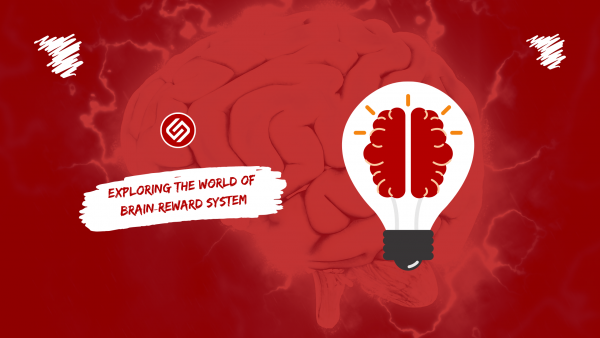The brain reward system is a fascinating mechanism in itself. Every process that has something to do with motivation is related to the reward system. On the flip side, a majority of people think that this part of the brain causes addiction. An essential aspect that must be understood here is that having goals is as necessary as health and well-being. Every neurological change that brings motivation and pleasure is powered by this complex group of neural structures.
Your brain reward system controls the resulting emotions that occur when you eat, drink a cup of coffee, wait for a like on the photo you have just posted, and everything that tends to invoke the feeling of motivation, satisfaction, or pleasure.
Most of us talk about another neural activity that helps us ensure our survival. This brain activity mainly involves primordial instinct, which triggers automatic responses. The very basic emotion governing these responses is fear. The primary function of this emotion is to make you careful. If you get a feeling that you have dangers all around you, and you need to stay in your safe zone, it is most likely due to this emotion.

When Does The Brain Reward Us?
With the fear being the most powerful stimuli, you may think what the purpose of all the positive things we have mentioned above is. The thing is motivation and well-being associated with a particular behavior help you develop yourself. The environment we live in is a system consisting of naturally well-placed situations and stimuli. So it is your job to make use of those factors for your benefit.
For instance, meeting up with a friend to have a cup of coffee after a stressful day would activate your brain reward system. You will also have a boost in the dopamine level when you have a glass of water during a hot day. The rewarding activities such as having a cup of coffee after a stressful day or drinking a glass of water to find some relief from the hot weather signal your neural structures to help you remain motivated to do what’s necessary.
The Brain Reward System How Does It Work?
The brain reward system is a mechanism, which includes a series of structures. These structures get into action in response to rewarding stimuli. For example, when you see a fresh pizza, a cup of hot chocolate, or anything that you want to achieve, your brain releases dopamine. This neurotransmitter increases your motivation to get what you have just seen.
Two scientists, James Olds and Peter Milner are believed to be the first individuals who discovered the existence of the brain reward system. In the 1950s, they found that stimulating different areas of the mammals’ brains could result in an increased motivation to go for something. This find also led them to think that it was possible to change human behavior by applying electrodes to specific areas of the brain.
That said, we are now going to discuss different structures of the brain reward system.
Mesolimbic Dopaminergic Pathway
This pathway is the route that allows the release and flow of dopamine. It begins from the ventral tegmental area and connects to the amygdala, nucleus accumbens, hippocampus, and prefrontal cortex. The primary function of this structure is to manage rewarding experiences and pleasure.
The Ventral Tegmental Area
This area is a combination of neurons in the middle of the brain. The purpose of this area is to deal with the processes resulting from love, learning, and motivation. This area also has much to do with addictive behavior.
Nucleus Accumbens
This area also consists of a group of neurons that govern emotions that result in or from laughter, pleasure, motivation, aggression, addiction, or fear.
Cerebral Cortex
It is the outermost and most sophisticated layer of the brain. This area is responsible for governing your functions and cognitive processes. Understandably, this area has much to do with the reward system of the brain. It is, however, worth mentioning that none of these structures function individually. They work under a combined mechanism known as motor limbic booster circuit.
The function of this area is to connect emotional and motivational areas with motor functions. In other words, this area allows you to plan and start what you need to do.
The Addictive Process
As mentioned above, many people associate the brain reward system with addictive behavior. This system has to do with several processes and behaviors, so you may want to understand why some people tend to develop addictions.
The factors that can contribute to the development of addictions may include social, familial, and psychological. Some studies even suggest that the susceptibility to develop addictive behavior may be linked to genetics. The good thing is that it is more than a possibility to find treatments for many cases of addiction.
For example, researchers have been able to figure out that changes to the mesolimbic reward system can result in addictive behavior. But let’s not talk about the triggers and causes here. It will be more important to note here that it is the brain that encourages us to go for something it considers beneficial or positive.
Recommended Readings: Dopamine And The Science Behind Motivation
Why Do We Stick To Addictive Behavior?
The question you may have in your mind is why we remain persistent with addictive behavior if it is harmful. The use of harmful substances, which also include drugs, changes the way our reward systems work. This change results in the reward system losing its control. The impact of this behavior can occur on any part of the brain, leading the person to have a strong desire to have that harmful substance.
Addictive behavior changes the perception of reality entirely, and it can leave a shocking impact on mental health, behavior, and health. Understanding what our brain’s rewarding system is and how it works can help us identify any behavioral changes that have the potential to lead us to something negative. More importantly, knowing the ins and outs of the brain reward system can help us understand who we are.










Leave a Reply